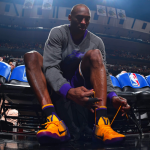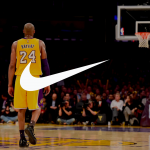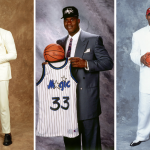
What's wrong with Italian sports newspapers
Kobe's death showed once again showed the problems of the mainstream Italian sports journalism
January 31st, 2020
In this article published on Rivista Undici n°3 (april 2015), Simon Kuper quoted the essay 'Chiacchiera Sportiva' by Umberto Eco, where it is stated that nowadays sport consists in “a discussion of the sport press, which generated itself a discussion on the sport press, thus, a sport raised to the n-th power”. The most recent controversy, via social media, about the choice of the three main Italian sport newspapers (La Gazzetta Dello Sport, Il Corriere Dello Sport and Tuttosport) not to devote the whole front page of monday 27th of January to Kobe Bryant - as opposed to other countries' counterparts such as Marca, L'Equipe, AS and Sport - boosted not only the idea of a sport debate more and more detached and independent from sport itself, but also the eternal argument on the exasperating “footballcentrism” by the Italian sport press, even when really important events occurr, no matter if positive or negative. This perception is shared by the famous Italian sportsmen Marco Belinelli and Federica Pellegrini very critical on their Instagram accounts, along with journalists which are very active on the social media like Fabrizio Biasin and Massimiliano Ambesi.
On Twitter, it’s possible to find a thread (quickly degenerated) where Roberto Maida, Corriere Dello Sport journalist, tried to explain its choice: the front page of the newspaper reported the tragedy of Calabasas only as an upper featured story, and a two-pages focus after the news on Serie A and the second, third and fourth division of the Italian football. Tuttosport made a similar choice, while La Gazzetta's front page featured as headlines both Kobe's death and the match Napoli-Juventus: in addiction, pages 2 to 7 have been reserved for articles about Kobe. Maida says that other countries have «different communication, culture and readers», to justify the choice of devoting the whole front page to this type of news instead of the most pouplar sport in Italy. It's a way to reiterate that this editorial policy is caused by the will to give to the Italian reader what he wants: football above everything, now and forever, then all the rest. Even when occurred the death of the last global, globalised and cross-cutting icon of our age. Differently, in Spain, a country similar to Italy for footballcentrism and therefore for the layout of sport newspapers, everything was ready to celebrate the victory of the national handball team at the European tournament in Austria, before the breaking news given by TMZ.
Io nemmeno ero in redazione ieri, visto che c’era il derby. Se dobbiamo fare una graduatoria di notizie, la tragedia di ieri non meritava di cancellare una prima pagina alle 20.30. All’estero c’è una comunicazione diversa. Un lettorato diverso. Una cultura diversa.
— Roberto Maida (@RobMaida) January 27, 2020
A choice that could be acceptable in a period of great crisis for print media: the ADS figures by Prima Comunicazione in January tell that, compared with November 2013, Gazzetta, Corriere and Tuttosport lost respectively the 38%, 48% and 59% in terms of diffusion and copies sold. However, this decision doesn't seem to have an actual feedback, in this and in many other cases. It’s not only about the negative feedback given by those readers who the editors are trying to please, or about the general quality: some immutable canons in traditional sport journalism have made themselves unable to face the necessary changes in an evolving world as regards content and multimediality. So Italian print media lost ground not only as compared with its online counterpart, but also in respect of foreign main sport newspapers. This “fake comfort zone” that was established (sales are still dramatically decreasing) leads to underestimate and trivialise the will of the end user of something different or at least in step with the times. A paradox that justifies a certain modus operandi blaming the domain crisis, but makes impossible to adopt any possible action to get out of it.
Last but not least, the issue concerning sport culture: thinking that Kobe Bryant's death can not upset the editorial times previously planned and set by a mid-season late football match, or anyway an event not deserving the front page, means not to rely on the readers' priority comprehension ability, especially the new generation ones. Furthermore, it reflects the inability of understanding the extra-sport dimension of characters, especially in the era of Cristiano Ronaldo's 200 million followers, who are trendsetters far before great champions in their own sports. Kobe Bryant wasn't “just” one of the best basketball players in history, belonging to the great minority able to take up Michael Jordan's legacy without being overwhelmed by it: he also won an Oscar for a short animated story based on his letter on The Players’ Tribune, he started writing a book with Paulo Coelho, he inspired a life philosophy, the “Mamba Mentality”, which entered in the common language. And he was also a father who, in the last moments of the last day of his life, was just being a father, accompanying his daughter and her teammates to the trainings.
Mamba Forever. pic.twitter.com/wIchSUwFM2
— Nike (@Nike) January 26, 2020
Like Muhammad Ali, like Ayrton Senna, like Marco Pantani, Kobe represented sport beyond sport, part of a collective daily routine, shared even by those who aren't NBA fans. Those who knew, and who know, who Kobe Bryant was, as those who know who Roger Federer, LeBron James, Federica Pellegrini, Usain Bolt, even Lewis Hamilton, Tom Brady, Serena Williams and Valentino Rossi are. Those who try to avoid the excessive sectorialisation in a domain which is already sectorialised on his own, a trend which shouldn't be possible in 2020 but still, from time to time, comes up and reveals all the limits and the drawbacks of the Italian information.




















